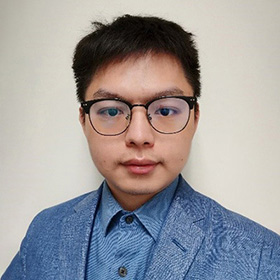
Ruquan Ye is an assistant professor in Chemistry, City University of Hong Kong. He received his B.S. (Chemistry) in 2012 from Hong Kong University of Science and Technology under Prof. Ben Zhong Tang’s supervision, and his Ph.D. (chemistry) in 2017 from Rice University mentored by Prof. James M. Tour. He worked with Prof. Karthish Manthiram as a postdoctoral associate in Chemical Engineering at the Massachusetts Institute of Technology (2017–2018). He was named World’s Top 2% scientists by Stanford University in 2020 and 2021. He was awarded Rising Stars by Small, Wiley in 2021, and Emerging Investigators by Journal of Materials Chemistry A, Royal Society of Chemistry in 2022.
Dr. Ye’s current research interests include developing cost-effect methods for materials manufacturing and investigating their applications in energy and environmental science. He is one of the pioneers in developing the laser-induced graphene technique, which uses a readily available CO2 laser to synthesize porous graphene. The laser-induced graphene method has been widely adopted across the globe to fabricate graphene-based films and devices. He also investigated the electrochemical CO2 reduction reactions, aiming to mitigate the carbon emissions while providing valuable chemicals. His research focuses on catalyst synthesis and interface design.
The prevalence of COVID-19 has caused global dysfunction in public health, sustainability, and socio-economy. While vaccination shows potential in containing the spread, the virus variants and co-infection with other diseases such as fatal fungal infections and monkeypox have further exacerbated the scenario. Therefore, the development of surfaces showing broad-spectrum antiviral and antimicrobial activities is imperative, especially amid the early stage of an unknown pandemic.
In this presentation, we will introduce our recent development of laser-induced graphene (LIG) technology for fighting against disease transmission. We will start with the introduction of LIG, a revolutionary technique to synthesize porous graphene film from universal carbon precursors. Then we will focus on our strategies for surface engineering of LIG, which enable rapid and efficient disinfection under mild conditions. The intrinsic, photothermally and electrically enhanced antimicrobial and antiviral activities of different types of LIG will be discussed. Lastly, we will showcase other developments of the LIG techniques and highlight their impacts on the environment, including surface sensing via hygroelectricity, degradation via Joule-heating, and water disinfection via electrochemistry.